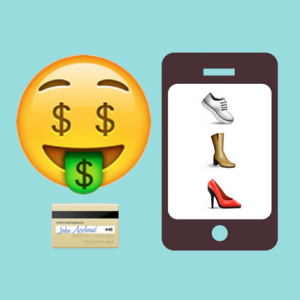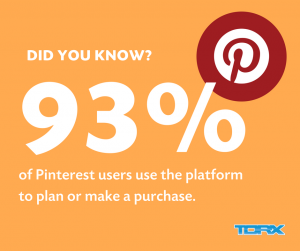Which social media platforms are the best for your business?
Here’s the thing about social media: For businesses, it’s really another marketing channel. And if your customers happen to be people who use the internet and/or own a smartphone, it makes sense to reach them where they already spend their time. You probably already know that a lot of people use social media all the time, and your business needs social media marketing to avoid missing out on crucial revenue opportunities. But if you’re just getting started, or you’re reevaluating your current strategy, how do you know which social platforms hold the most promise for your business?
To start, understand that social media is only meaningful to your business when it helps you reach a specific goal. And once you’ve identified what you’re trying to achieve, it’s easier to understand which social media platforms are the best investments for your business goals.
So, first: What are your goals?
Like other forms of marketing, social media can help your business do the following things:
- Increase awareness of your brand, products or services
- Drive website traffic or encourage sales, online and in physical stores
- Promote engagement with people who are likely to buy your product or use your services, especially previous customers
Depending on your priorities, some platforms will be more useful to your business than others. But most platforms can help you achieve all three of these goals, if you create smart campaigns that use the right features and tools.
Next, let’s think about who you’re trying to reach.
You only want to spend your marketing money to reach the people you know or think are interested in what your business has to offer. So if you approach social media from the mindset of your ideal customers, you can figure out which social spaces they like to use, and make sure you’re using the platforms where they already are.
Taking this perspective makes the most sense for your marketing budget, but also for your time management. Social media management requires as much strategy, effort, measurement and care as any other kind of marketing and advertising, so you should focus your efforts where you’re more likely to see results.
So, which of the following best describe your marketing goals?
If you want to spread the word about your business and increase brand awareness:
 You probably want to advertise on Facebook, Twitter and Instagram. Tons of people use them every day, and it’s possible to get your ads in front of anyone and everyone that your budget allows. Facebook and Instagram advertising options make it easy to target anyone within a certain location, such as a 20 mile radius of your store, a regional service area, a whole state or the entire country. However, through the use of hashtags, both Instagram and Twitter enable you to get content in front of users who have interests similar to your business, even if they don’t follow you.
You probably want to advertise on Facebook, Twitter and Instagram. Tons of people use them every day, and it’s possible to get your ads in front of anyone and everyone that your budget allows. Facebook and Instagram advertising options make it easy to target anyone within a certain location, such as a 20 mile radius of your store, a regional service area, a whole state or the entire country. However, through the use of hashtags, both Instagram and Twitter enable you to get content in front of users who have interests similar to your business, even if they don’t follow you.
If you know who your ideal customer is, and you’re trying to get in front of a specific audience:
You’ll want to use Facebook, Instagram and/or Pinterest, which offer advanced options to serve your ads to your best prospects within their massive user audiences. For example, if you’re trying to promote replacement windows to 25-65 year old homeowners in the central Virginia area, Facebook can help you reach them. If you’re trying to sell handmade natural makeup to wealthier women on the East Coast, they’re probably already searching for similar things on Pinterest and Instagram, so you’ll want to make sure they see your products, too. You get the idea.
If you want your previous customers to keep thinking about how much they love you:
 Facebook and Instagram are perfect platforms for sharing new product releases and keeping customers informed of what your business is doing. Plus, Facebook offers targeting options to show tailored ads to people based on whether they visited your site, looked at a certain product or made a purchase, so you can retarget them with little nudges to click the buy button on that shopping cart they’re pondering. If your non-advertising content is interesting and helpful to your customers, they’ll want to stay engaged with your business.
Facebook and Instagram are perfect platforms for sharing new product releases and keeping customers informed of what your business is doing. Plus, Facebook offers targeting options to show tailored ads to people based on whether they visited your site, looked at a certain product or made a purchase, so you can retarget them with little nudges to click the buy button on that shopping cart they’re pondering. If your non-advertising content is interesting and helpful to your customers, they’ll want to stay engaged with your business.
If your customers are other businesses:
You should be on LinkedIn, the professional network that’s experiencing lots of user growth right now, and is widely viewed as a serious space for business. Users there will like your B2B content. Your company page is a great opportunity to impress potential clients, and you can invest in LinkedIn advertising to get your name and content in front of your top prospects.
If you’re trying to sell a product:
 Facebook, for the remarketing opportunity, but mostly Pinterest, because most users intend to buy at some point. Pinterest is perfect for showcasing individual products, while suggesting pins based on what users and their friends already like. You can also run remarketing ads to keep your prospective customers’ eyes on those items they’ve been considering, and you can track when people pin items from your website.
Facebook, for the remarketing opportunity, but mostly Pinterest, because most users intend to buy at some point. Pinterest is perfect for showcasing individual products, while suggesting pins based on what users and their friends already like. You can also run remarketing ads to keep your prospective customers’ eyes on those items they’ve been considering, and you can track when people pin items from your website.
On the other hand, Instagram has a new host of shopping features that enable users to view and even purchase products through the app. Instagram is an aspirational place, which makes it a neat space for product placement. Like catalog photos, your posts can help users envision what it would look like to use your products. For example, an Instagram post featuring a sweater is a catalog-like opportunity to showcase that sweater as part of an outfit, which in turn helps users picture how that sweater would mesh with their personal style. If your business is lifestyle-focused and visual, Instagram is where you want to be.
 If you do home renovations, build pools, patios, porches or perform landscaping services:
If you do home renovations, build pools, patios, porches or perform landscaping services:
Houzz, because that’s exactly what it’s intended for. But also Pinterest, because so many people will use their boards to find inspiration and plan their home improvement products. #dreamhome
If your customers are on the younger side, say 18-35:
Facebook, Instagram, Twitter and maybe Pinterest and/or LinkedIn. Young folks love those.
If your customers are more mature, maybe 35 and up:
Facebook, Instagram, Twitter and maybe Pinterest and/or LinkedIn. This is a trick question, because it’s 2018 and most people with internet access and smartphones use some form of social media to some extent. They’re even using Snapchat these days. If that doesn’t convince you that everyone you want to reach is on some kind of social media, we’re not sure what will.
Got more questions? We can help you determine how social media can best serve your marketing strategy. Give us a call at 804.577.8679, or contact us below.
